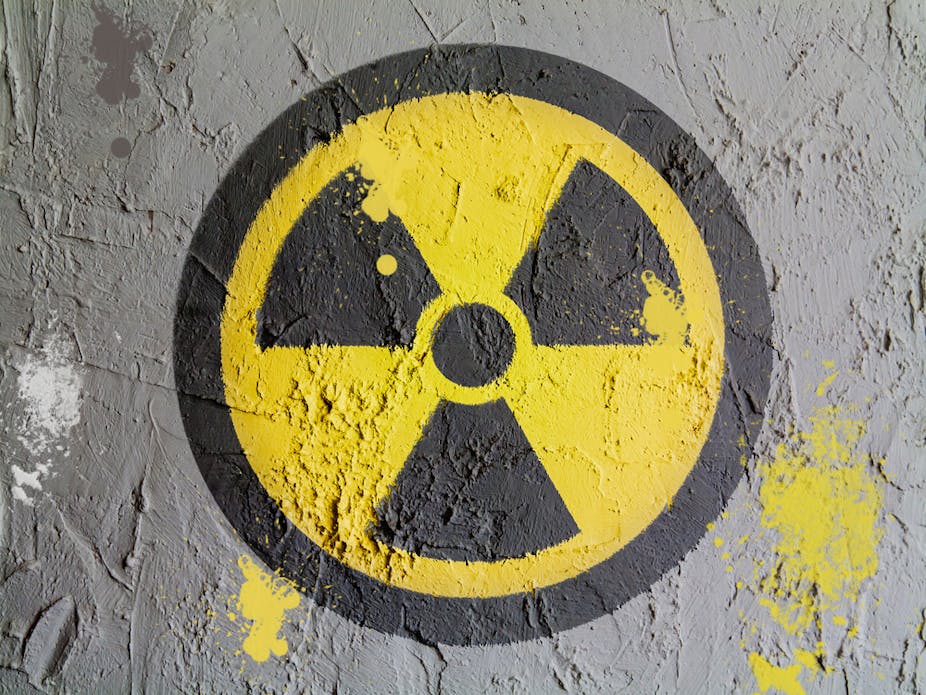Every job comes with risk and for those who work in the nuclear power industry the long-term risk of cancer is small but significant.
Last decade, research looking into the prevalence of cancer in nuclear plant workers concluded a higher incidence of cancer compared with the general population.
But research published this week in the British Journal of Cancer indicates the risk is not as high as first thought, and in fact may be no higher than would be expected for a worker in any industry.
So why is this important? Because an accurate determination of the risks helps us to prepare reasonable and safe exposure limits for current and future workers.
But before we get into that, let’s look first at how radiation can cause cancer.
Radiation and cancer
Every day, the human body is exposed to radiation from electrical equipment, sunlight and radioactive isotopes in natural substances. Some of this radiation passes through our body with no harmful effect but some types of radiation can cause damage.

As the bulk of the human body is water, this is the molecule most likely to interact with the radiation, the result of which is the production of highly destructive free radicals. These free radicals can go on to damage any of the components inside our cells, including most importantly, DNA.
The human body is very good at fixing some types of DNA damage called single strand breaks caused by free radicals. But the radicals can also cause double strand breaks, which are much harder to fix and are more likely to cause the cell to make a mistake during the repair.
No single mistake may be important, but over time these mistakes build up, potentially leading to the development of cancer. This means it doesn’t take just one high dose exposure of radiation to cause cancer; although that could certainly do it. Cancer can also arise from repeated, low-dose exposures.
But not all radiation is bad. In fact, some studies have shown that low doses of radiation may even be beneficial. Some researchers have postulated that exposure of low doses can help stimulate the body’s defence system and actually protect people from cancer.
Nuclear worker exposure to radiation
Modern nuclear reactors are well designed to prevent leakage of radiation and alarm systems are designed to signal whenever a leak does occur. As an added safety precaution, all workers will wear dosimeters to monitor their individual exposure levels.

Interestingly, the safe exposure limits for working with radioactive materials and radiation are based on health effects observed in survivors of the Hiroshima and Nagasaki bombings.
Long-term health studies of the survivors found a correlation between their individual estimated dose and the likelihood of cancer; although heart and respiratory disease can also be long-term effects of radiation exposure.
The current standard for measuring individual doses is the Dosimetry System 2002 (abbreviated as DS02).
The individual dosimeters of workers from nuclear power plants as far back as the 1940s are kept and available for analysis to correlate with the long term health of the workers. Subsequently, the largest study to date was coordinated by the International Agency for Research on Cancer and published in 2005 included workers from 15 different countries, comprising 154 different facilities.
From the 400,000 workers included in the study, 24,000 had already died. Of these, 6,715 died from cancer; 196 from leukaemia and 6,519 from other types of cancers. An editorial on the study concluded:
The IARC study probably does indicate that repeated exposure to small doses of radiation increases the risk of cancer.
But many noted a few discrepancies in the study. The biggest concern was that while the Canadian workers included in the data accounted for only 4% of the deaths, collectively they raised the cancer risk factor by approximately 40%.
Now a reanalysis of the employment records and the exposure data by researchers from the United States and Canada have shown the risk to the Canadian workers is not as high as calculated in 2005. In their study they found that:
radiation risks of leukaemia were negative in workers from the 1956-1964 era, and that …. all workers combined had mortality lower than the general population.
So where to now?
The continual refinement of the risks of low, repeated radiation exposure based on studies such as these help governments and international agencies more accurately define safe exposure levels for workers to prevent cancer.
This latest study indicates that the defined safe exposure levels are probably appropriate, although further studies of risk continue be undertaken in the future as good practice.
While these studies have been done in the context of nuclear power workers, the results have application to professionals in related fields, such as medicine and science, who may also be exposed to low doses of radiation in the course of their employment.

